
Sopwith Pup - $$4.50
The Pup's light weight and generous wing area gave it a good rate of climb. Agility was enhanced by ailerons being fitted on both wings. The Pup had half the horsepower and armament of the German Albatros D.III, but was much more maneuverable due to its light wing loading. Ace James McCudden stated that "When it came to maneuvering, the Sopwith (Pup) would turn twice to an Albatros' once ... ".
Sopwith Pup WWI British Scout
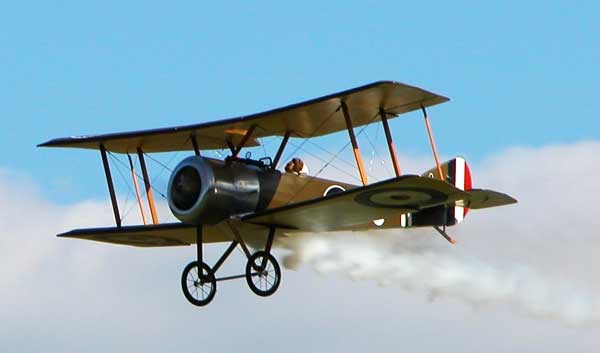
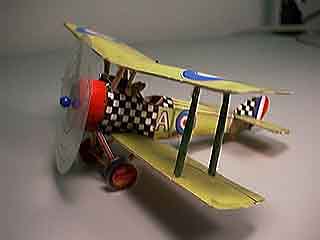
The Sopwith 'Pup' was developed from the personal plane of Sopwith Aviation Company's test pilot, Harry Hawker.
Unlike it's big brother, the Camel, it was fun and easy to fly.... Some say it was the best flying airplane!
Did you know that you can actually 'fly' these little models by gluing a length of thread over their CGs and gently twirling them round.
They're nicest, though, hanging from the ceiling as a mobile.
About the Sopwith Pup
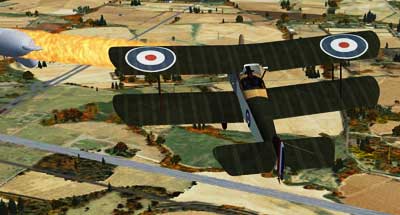 The neat little biplane, known officially to the R.N.A.S. as
Sopwith Type 9901 and to the R.F.C. as the Sopwith Scout, first
appeared in February 1916. It was similar in layout to the Sopwith
SL.T.B.P.. the personal aeroplane of Harry Hawker, the firm's
test pilot. Pilots regarded the new scout as the 'pup' of the
Sopwith 11/2Strutter, and 'Pup' it became, in spite of official
discouragement.
The neat little biplane, known officially to the R.N.A.S. as
Sopwith Type 9901 and to the R.F.C. as the Sopwith Scout, first
appeared in February 1916. It was similar in layout to the Sopwith
SL.T.B.P.. the personal aeroplane of Harry Hawker, the firm's
test pilot. Pilots regarded the new scout as the 'pup' of the
Sopwith 11/2Strutter, and 'Pup' it became, in spite of official
discouragement.
The standard engine was the 80 h.p. Le Rhone rotary, installed in a circular open-fronted cowling. Other engines sometimes fitted were the 80 h.p. Gnome or the 80 h.p. Clerget. while many of the Home Defense Pups had the 100 h.p. Gnome Monosoupape with a horseshoe-shaped cowling. The wings had wire-braced wooden spars and ribs; the raked-back wing-tips and trailing-edges were of steel tubing.
The center section was wide, so that the centre-section struts
were splayed outwards. The tail-plane was of wooden and steel-tube
construction, fabric-covered. The elevators, fin and rudder were
of steel tubing. The fuselage, a wire-braced box girder, was fabric-covered
except for aluminum sheeting behind the cowling and plywood around
the cockpit. The undercarriage was of the Sopwith split-axle type.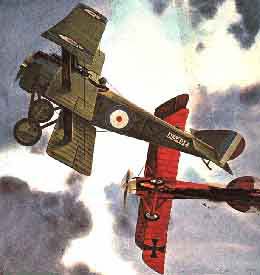
The usual armament was a Vickers gun mounted centrally in front of the cockpit, synchronized by means of the Sopwith-Kauper gear. It was fired by depressing a lever that projected backwards from the gun. Pups built for ship use had a tripod-mounted Lewis gun, which fired forwards and upwards through an aperture in the center section.
As early as May 1916 one of the prototypes was in France, and by September a number were in use with No. I Wing, R.N.A.S. The first real successes, however, were obtained by No. 8 (Naval) Squadron, which operated from November 1916 in support of the R.F.C.: in less than two months twenty German machines were shot down. No. 54 Squadron arrived with Pups in December: No. 3 (Naval) Squadron relieved No. 8 in February 1917. and No. 66 Squadron R.F.C. reached the front in March.
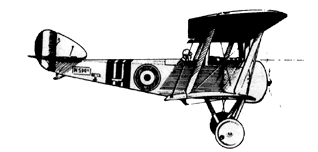 The only other unit to fly
the type, No. 46 Squadron, was reequipped with it in April 1917.
In spite of having exactly half its horse-power, the Pup was superior
to the opposing Albatros D-III at high altitudes, because of its
lighter wing-loading. McCudden wrote: ... . at 16,000 feet the
Albatros Scout began to find its ceiling just where the Pup was
still speedy and controllable.' There were not, however. enough
Pups available to overcome the general German superiority.
The only other unit to fly
the type, No. 46 Squadron, was reequipped with it in April 1917.
In spite of having exactly half its horse-power, the Pup was superior
to the opposing Albatros D-III at high altitudes, because of its
lighter wing-loading. McCudden wrote: ... . at 16,000 feet the
Albatros Scout began to find its ceiling just where the Pup was
still speedy and controllable.' There were not, however. enough
Pups available to overcome the general German superiority.
Throughout the summer and autumn of 1917 the little biplane gave splendid service on the Western Front.
The R.N.A.S. Pups did much pioneer work on the early aircraft carriers. To facilitate deck landings, the later ship-borne machines were fitted with skid undercarriages; these were designated the Type 9901 a. William Beardmore & Co., Dalmuir. developed a modified version specially for carrier work, the W.B.III. It had folding wings and a retractable undercarriage, to save stowage space: about sixty were built.
The Pup was almost unanimously agreed to be the most pleasant to fly of all British aeroplanes of the 1914- 18 period. A total of 1,770 was manufactured.
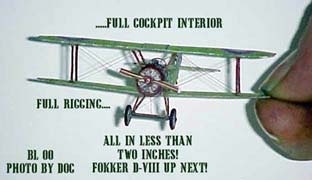 The only non-paper element is the acetate windscreen! |
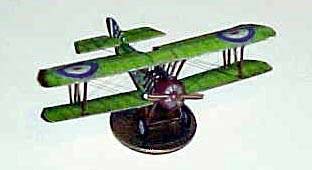 Giant thanks to Barry Lank for these Mini Pups...YES! that's a quarter! |
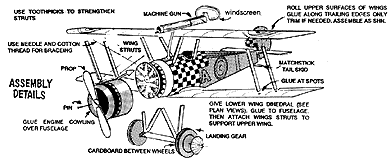
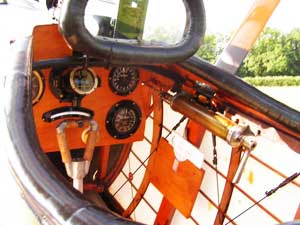 |
Cockpit of the Sopwith Pup. |
Specifications of the Sopwith Pup
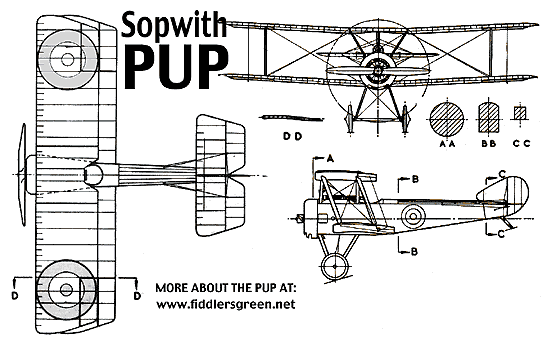 |
Length: 19 ft 3¾ in Wingspan: 26 ft 6 in Height: 9 ft 5 in Wing area: 254 ft² Empty weight: 787 lb Loaded weight: 1,225 lb Powerplant: 1× Le Rhône air-cooled rotary engine, 80 hp Performance Maximum speed: 111.5 mph at sea level Service ceiling: 17,500 feet Endurance: 3 hours Climb to 10,000 ft : 14 min Climb to 16,100 ft : 35 min |
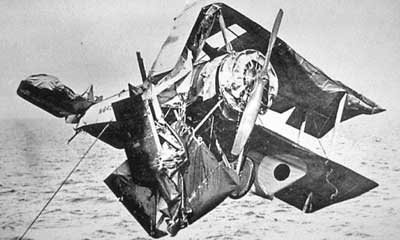 |
| An attempt to land on a British carrier ended tragically when the aircraft went over the side of Furious and Commander Dunning was drowned. |


